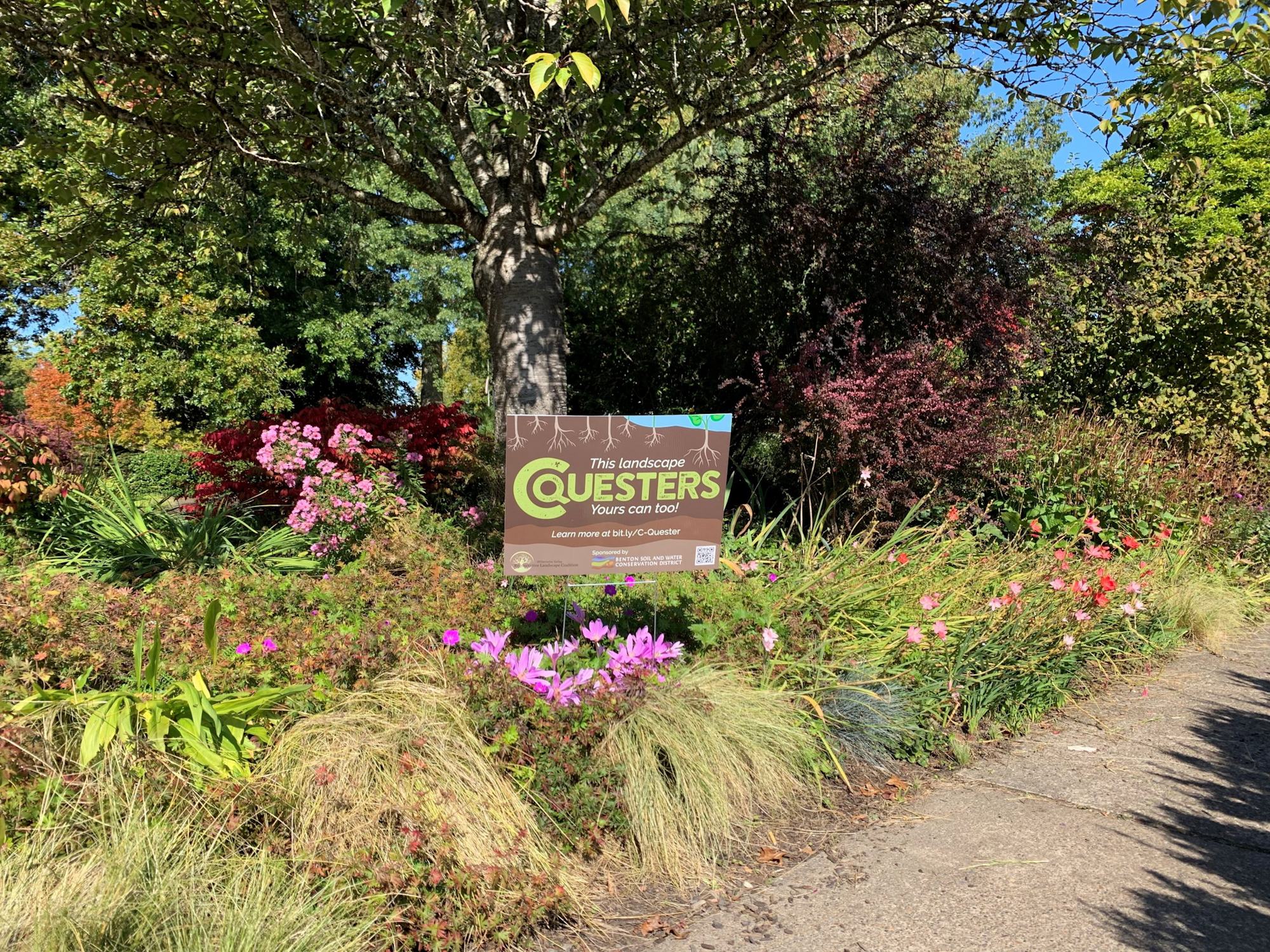The Dirt | Healthy Soil Helps the Planet! Part 4
Welcome to the Willamette Valley Regenerative Landscape Coalition Soil Carbon Blog series!
The opinions, beliefs and viewpoints expressed by the author of this five-part blog series do not necessarily reflect the opinions, beliefs and viewpoints of Benton Soil & Water Conservation District representatives.

Part 4: Increasing organic matter levels more quickly
In science class, many of us were taught that it takes 500 to 1,000 years to build an inch of soil. This statistic shows a basic misunderstanding of soil. Yes, it may take that long for volcanic rock to get ground down into soil, but most soils in the world are already beyond that stage, and are improved by increasing organic matter.
The organic (carbon) portion of the soil can be increased quickly enough that it can be a major tool to fight climate change.
The first strategy is simple. Grow more plants. More leaves = more photosynthesis = more carbon put back in the soil. In both conventional farming and landscaping, this idea has been lost. Many landscapes are left bare, covered with gravel, or have huge spaces between plants. In cases like this, soil slowly degrades as the decomposer organisms in the soil eat the existing OM and breathe it out into the air. Fortunately, we are seeing more interest in densely planted landscapes, that not only capture and store more carbon, but can also be less costly to install and require less maintenance.
The second strategy is to increase plants’ efficiency. It is well understood by science that plants do not photosynthesize nearly as well as they are capable. Why would this be? One theory is that as plants evolved, they had to adapt their photosynthetic ability to be more flexible in variable environments. This flexibility came at the cost of efficiency.
People are researching ways to enhance plants’ efficiency. These methods are centered around soil biology, mineral nutrition, and genetics. For example, an extremely vigorous soil life is particularly useful to make key nutrients more available to plants, allowing them to photosynthesize even more efficiently.
There is also evidence that when plants photosynthesize more efficiently, they dramatically increase their root exudates, which further boosts soil life and contributes to more OM accumulation. This positive feedback loop is at the core of many regenerative systems.
Here are a few real-life examples of massive, fast, organic matter increases:
- Rancher Gabe Brown of Brown’s Ranch in North Dakota has developed a farming system in which he has used intensively managed grazing and cover cropping to raise organic matter levels from a very depleted 1.5% to between 5 and 10%, over a couple decades — without adding fertilizer or compost. His soils have been tested as having about 70 more tons of carbon per acre than they had in the 1990’s. His topsoil layer has increased from 2 inches to about 2 feet.
- Advancing Ecological Agriculture, an Ohio-based agronomy firm, has reported rapid gains in OM levels, to the tune of 1% over just 3 years (in depleted soil) for low biomass crops like strawberries.
- Marin Carbon Project has used single applications of compost in California rangeland, resulting in soil carbon increases of 1 ton per hectare over 3 years. This is much more carbon than was applied in the form of compost.
- David Johnson of NMSU developed his “Biologically Enhanced Agriculture Management” approach to farming that averaged 4 tons per acre per year of soil carbon increase over a 4-plus year period in test plots.
Some of the tools used to improve soil organic matter and biology have included microbial inoculation and “biostimulants” (food for microbes), cover cropping, and dense diverse planting systems (no bare soil), fine-tuned plant nutrition, and intensively managed grazing.
We can do something about the situation we’re in. Although we’re just at the beginning stages of understanding soil carbon sequestration, we can begin this work on small and large scales. We can put our focus, even in our own yards and cities, on increasing photosynthesis by devoting more space to – planting more plants.
